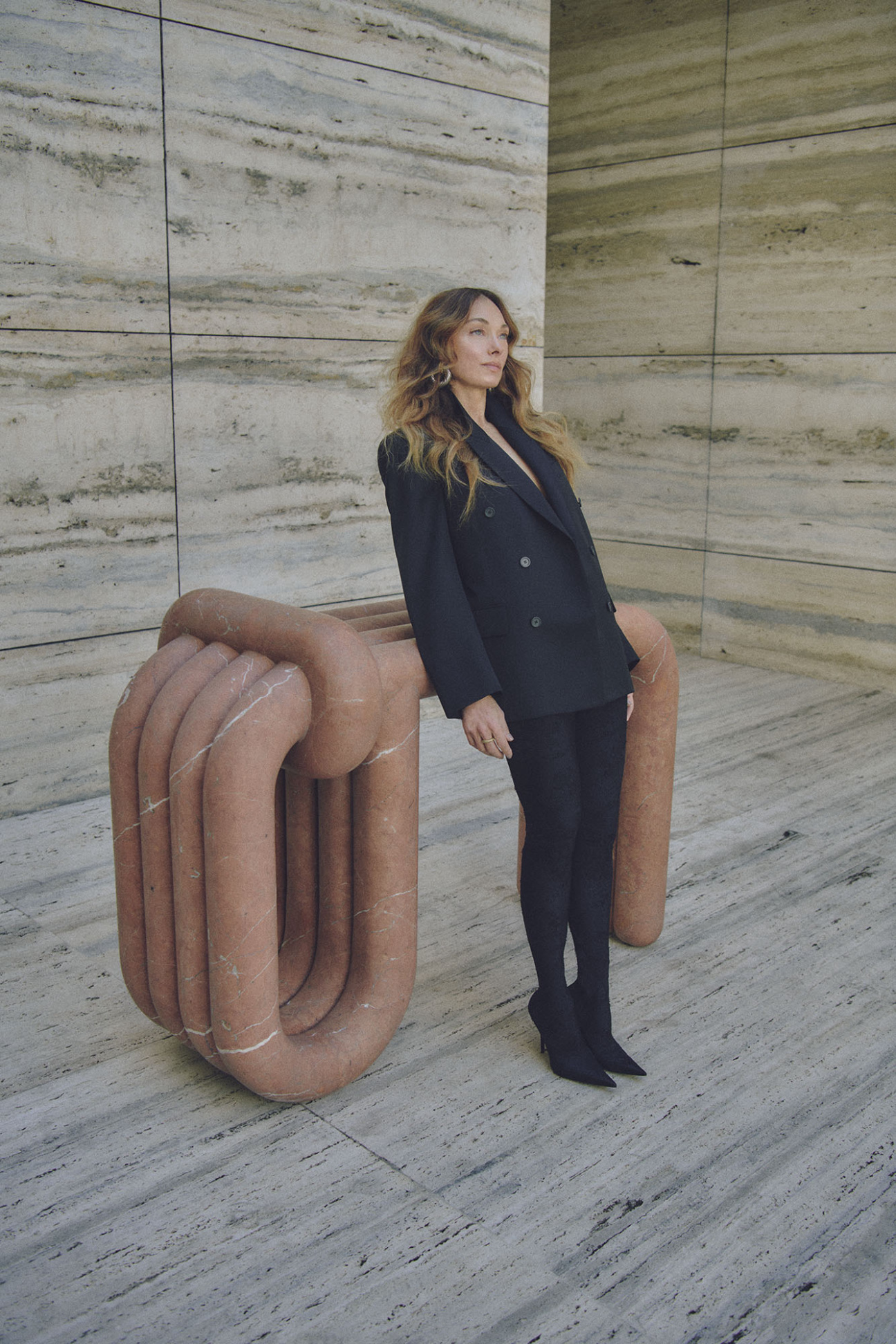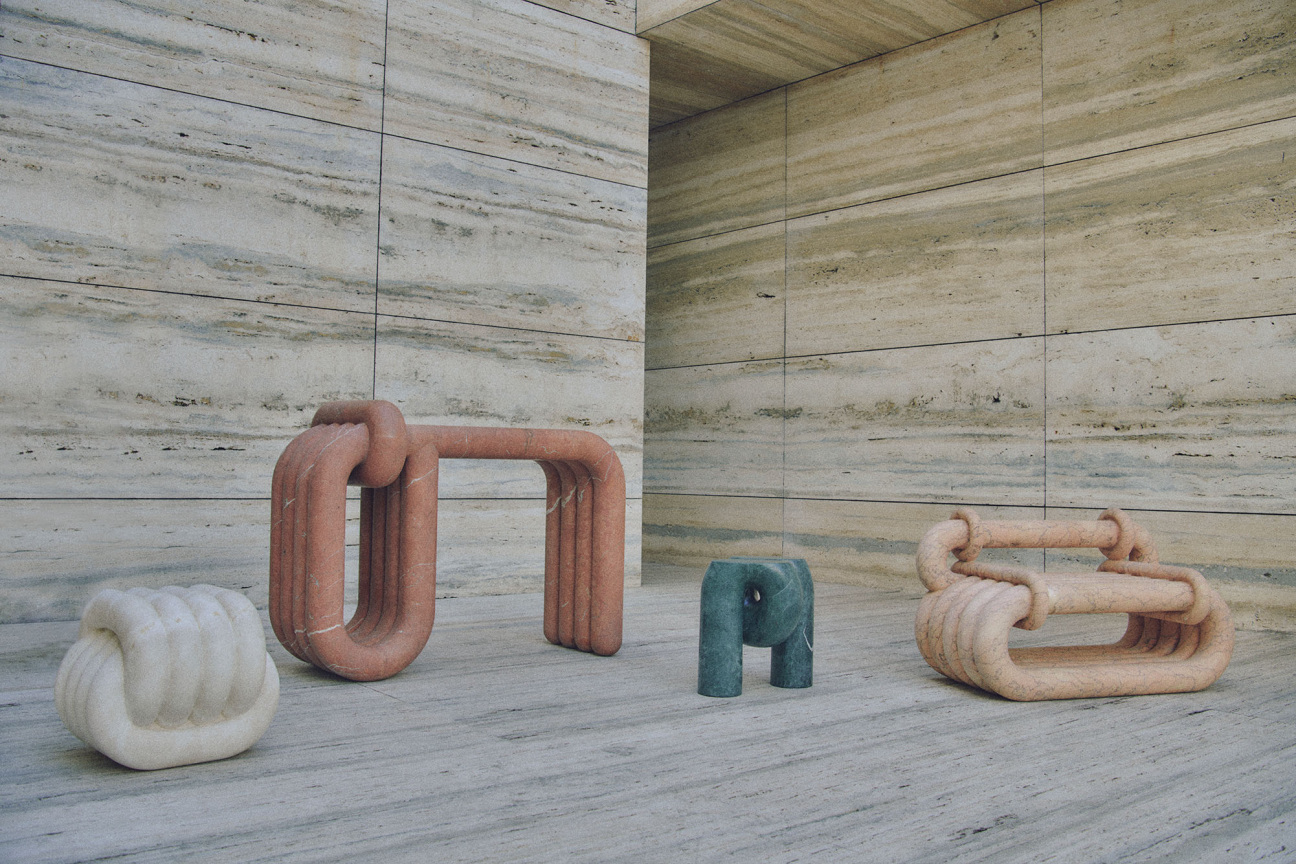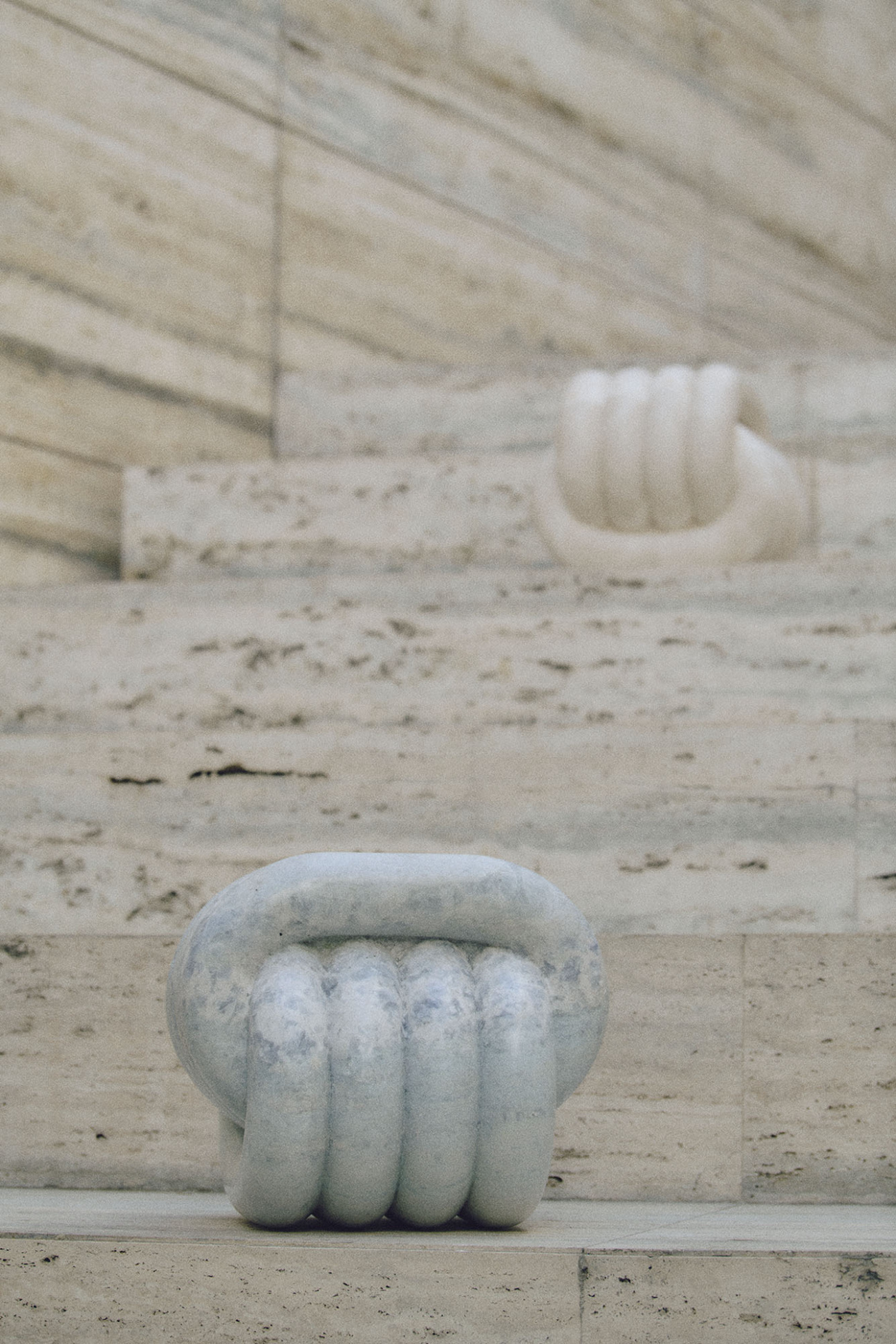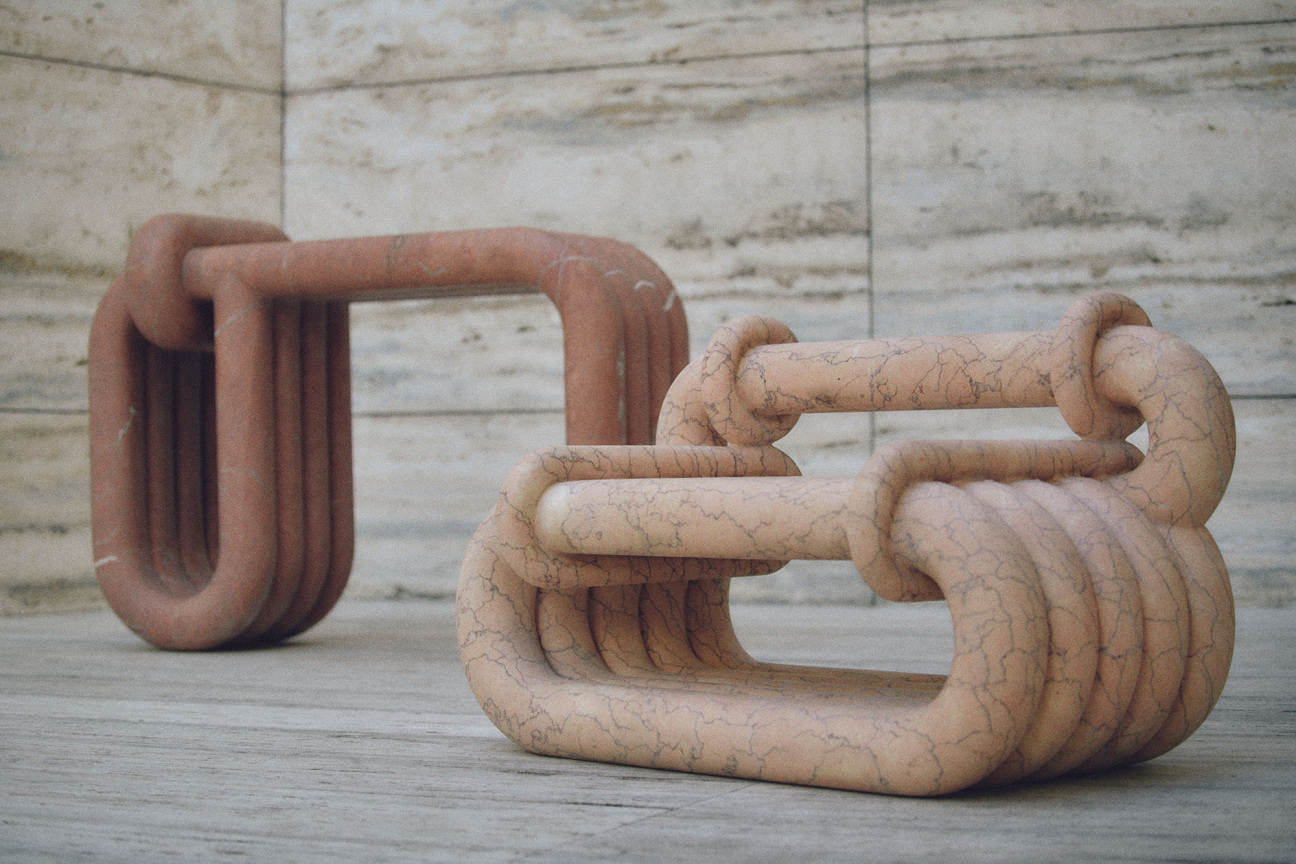
Kelly Wearstler is known for her outsized contribution to the contemporary design landscape, but her eye is no less sharp when it comes to interior decor. For the 55-year-old designer, the satisfaction comes from sourcing objects and inspiration from near and far.
About a decade ago, Wearstler was captivated by a distinctive tapestry that she stumbled upon while wandering the Paris Flea Market. "It was love at first sight," she says of the piece, which now hangs on the wall in her Malibu home. Its origins were a mystery—at first. Only after a magazine published photos of Wearstler’s home did the tapestry’s new location come to the attention of the world-renowned sculptural artist Sheila Hicks, who identified the woven wall-hanging as her own.
"She reached out to me and said, 'That’s my piece. It needs a little restoration. I’d be happy to work on that for you,’" Wearstler recalls of her first interaction with the textile artist, who has lived in Paris since the 1960s. The pair quickly struck up a transatlantic friendship and creative rapport. "She’s been a huge source of inspiration," says Wearstler, adding that she has admired the now-88-year-old artist since the first time she discovered her work in college.

In the run up to the debut of NUDO, Wearstler’s latest project which will be unveiled tomorrow (Nov. 29) at ARCA Wynwood, the designer can’t help but reflect on her chance encounter with Hicks. The 22-piece collection, sculpted entirely from marble, is conceptually and aesthetically anchored in the motif of fabric knots, both their physical structures and their connection to various crafts-making traditions.
"The link and the knot signify the unity of people and cultures," Wearstler explains, "I wanted to draw inspiration from this universal and ancient practice of weaving.” Rather than centuries, the fabrication of NUDO itself took place over a matter of months. Earlier this year, ARCA—a natural materials supplier headquartered in Mexico City—approached Wearstler’s studio to collaborate on a collection that would christen the company’s first U.S. showroom in Wynwood during Miami Art Week. Over four months, Wearstler immersed herself in the creative process at breakneck speed: “Coming up with the story, developing the designs, and selecting the stones. That was a huge effort—I was like, 'What do you have huge blocks of that you’ve already extracted from the quarry?'" Wearstler recalls. The chosen blocks of marble were then exported to ARCA-partnered fabricators across Portugal, Italy and Spain. At each site, robotic arms carved Wearstler's designs out of the raw-stone slabs before artisans finished off the pieces by hand. "I always reference craft and technology. Technology affords us forms of craft that maybe wouldn't have been available 300 years ago," Wearstler says of the robot-human fabrication process. "But there are some things that technology can't touch. There’s something a little more soulful that goes along with the hand."

The pieces in the collection, which appear constructed from an array of interlinking tubular components, reflect their hybrid origins by blending mechanistic perfection with rough-hewn and organic design references. "I was thinking about what the story was here,” Wearstler recalls, “Turning this hard, inflexible material into these pliable, soft, curvaceous shapes." In ARCA’s bright new space, a scattering of small ice-blue end tables look like monkey’s fist knots woven from lengths of rope, while an undulating circular bench carved from stippled dark-green marble resembles something out of a science fiction film. An elegant rust-colored console veined with creamy white sits nearby. While the pieces are structurally ambitious and elaborately constructed, each one, Wearstler assures, is carved from a single piece of stone. "That’s where the human hand comes into play—realizing those nuanced openings and forms that you can’t do with the robotic arm," she says.

The works in NUDO, which transform the most fundamental building blocks of textile into larger-than-life forms, possess an eerily familiar and viscerally pleasing appeal. But after so many years at the top of her field, Wearstler’s knack for eliciting that kind of reaction is innate. "That’s the trick to making something that you've seen a million times feel new: transpose it into another material," she continues. "That makes you fall in love with it again."










 in your life?
in your life?

